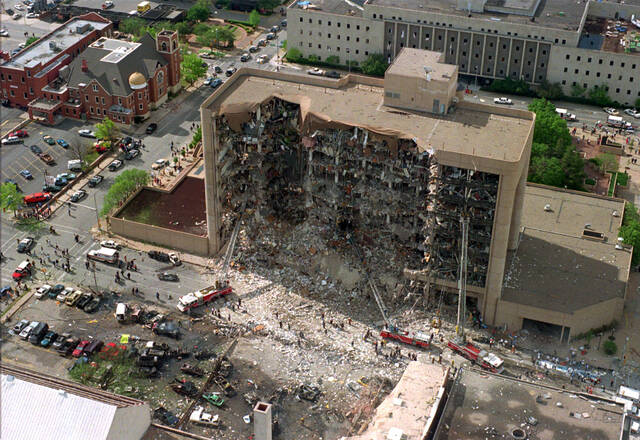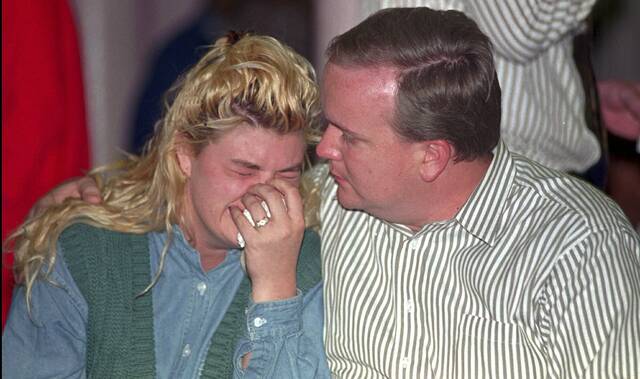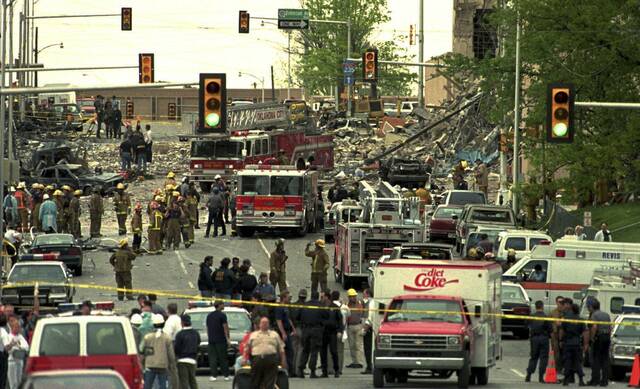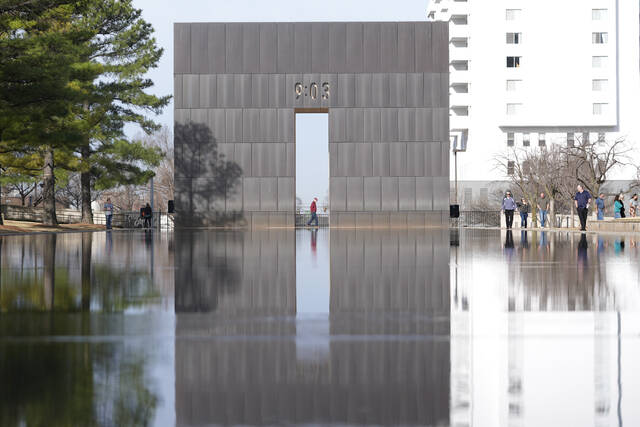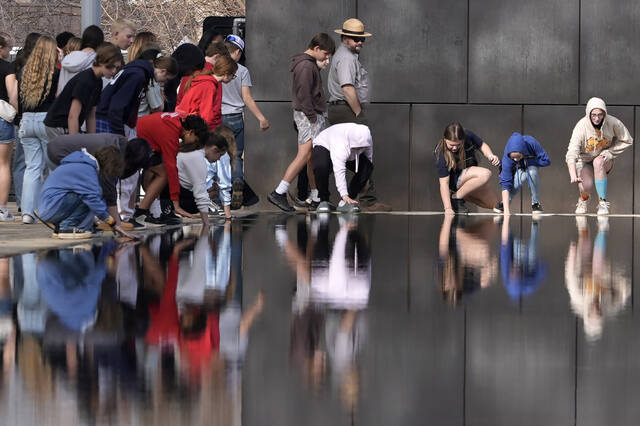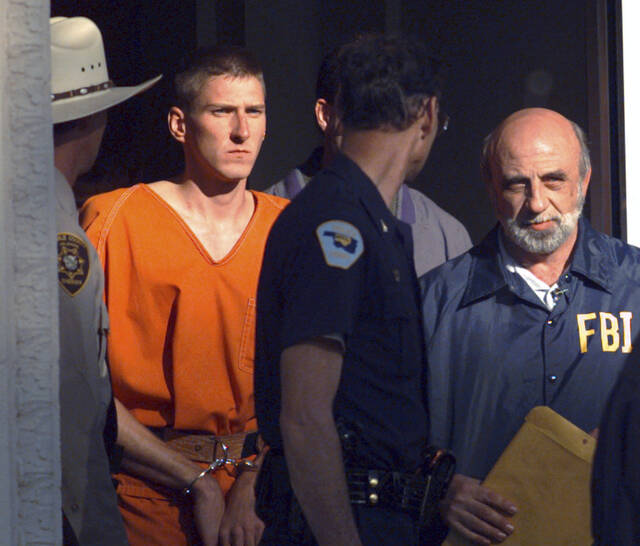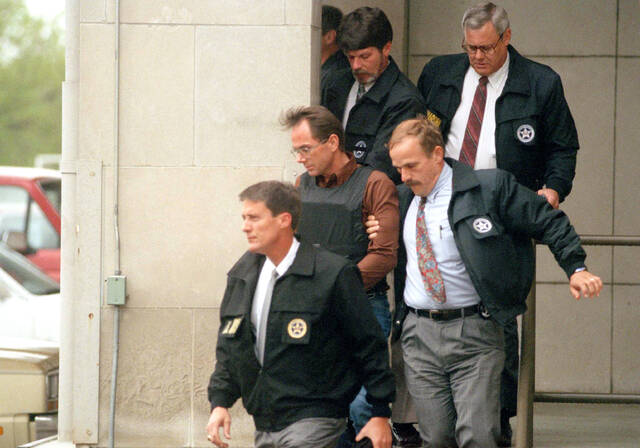Oklahoma City to mark 30 years since the bombing that killed 168 people and shook America
A bomb with a force powerful enough to instantly destroy much of a nine-story building shattered a quiet Oklahoma City morning and sent a shock wave through America.
Saturday is the 30th anniversary of the Oklahoma City bombing, the deadliest homegrown attack in United States history that exposed a dark undercurrent of anti-government extremist anger.
A public ceremony to mark the anniversary at the Oklahoma City National Memorial Museum will include the reading of the names of the 168 people killed, remarks by victim family members and survivors, and a keynote address by former President Bill Clinton.
The victims
The dead ranged in age from three months to 73 years old. Nineteen of them were children. Hundreds more were injured.
The building that was bombed — the Alfred P. Murrah federal complex — included regional offices for several agencies, including the Social Security Administration, the FBI, the Secret Service, the Bureau of Alcohol, Tobacco and Firearms, and a credit union. America’s Kids Daycare was on the second floor.
The bomb, a mixture of ammonium nitrate and diesel fuel packed into a rental truck, sheared off about a third of the building and caused floors to collapse on each other. Some victims not killed by the blast were crushed to death, buried by the falling structure.
The bombers
Authorities initially suspected the attack had been orchestrated by extremists outside the U.S., but the perpetrators turned out to be two former U.S. soldiers.
Timothy McVeigh and Terry Nichols met while serving in the Army. The pair held a deep anger toward the American government that had been sharpened by the 1993 federal raid on the Branch Davidian compound in Waco, Texas, that killed 76 people, and a standoff in the mountains of Ruby Ridge, Idaho, that left a 14-year-old boy, his mother and a federal agent dead.
The Oklahoma City bombing happened on the second anniversary of the fiery end to the 51-day Waco siege.
McVeigh drove the truck to the site and set the fuse to blow it up. He was convicted of 11 murder counts and executed by lethal injection in 2001. Nichols helped McVeigh plan and build the bomb. He was convicted of conspiracy and involuntary manslaughter, and is serving life in prison.
Domestic extremism
The bombing exposed Americans to violent extremism and anti-government sentiment on home soil. McVeigh and Nichols sympathized with right-wing militia movements that sprang up in the early 1990s and continue to this day, often with ties to conspiracy theories, nationalism and white supremacist ideology.
How to tackle domestic political extremism has proven difficult and politically divisive in the 30 years since the bombing in Oklahoma.
In 1996, Clinton signed an “antiterrorism” law that toughened penalties for a wide range of crimes and made it a crime to target federal workers performing their duties. It also spent about $1 billion, most of it for the FBI, to expand counterterrorism efforts.
Federal criminal law defines domestic terrorism as violence intended to coerce or intimidate a civilian population and to influence government policy, but there is no stand-alone domestic terrorism charge.
In 2022, the Justice Department created a specialized unit focused on what officials described as an “elevated” threat from violent extremists in the U.S. And some survivors of the Oklahoma City bombing have said they worry that anti-government rhetoric in modern-day politics could also lead to violence.
The memorial and ceremony
What was left of the federal building was torn down about a month after the bombing and a memorial complex was built in its place. The memorial includes a museum, a reflecting pool and 168 empty chairs of glass, bronze and stone etched with the names of those killed. Nineteen of the chairs are smaller than the others to represent the children killed.
Gates to the memorial mark the times, 9:01 a.m. and 9:03 a.m., while the reflecting pond between them represents 9:02 a.m., the minute the bomb exploded. A “Survivor Tree,” a gnarled American elm that withstood the blast, now stands on a small hill and shades the memorial below.
The memorial site is among Oklahoma’s most popular destinations, typically drawing more than 500,000 visitors each year. School children arrive by the busload to learn about the dangers of political violence.
Remove the ads from your TribLIVE reading experience but still support the journalists who create the content with TribLIVE Ad-Free.

